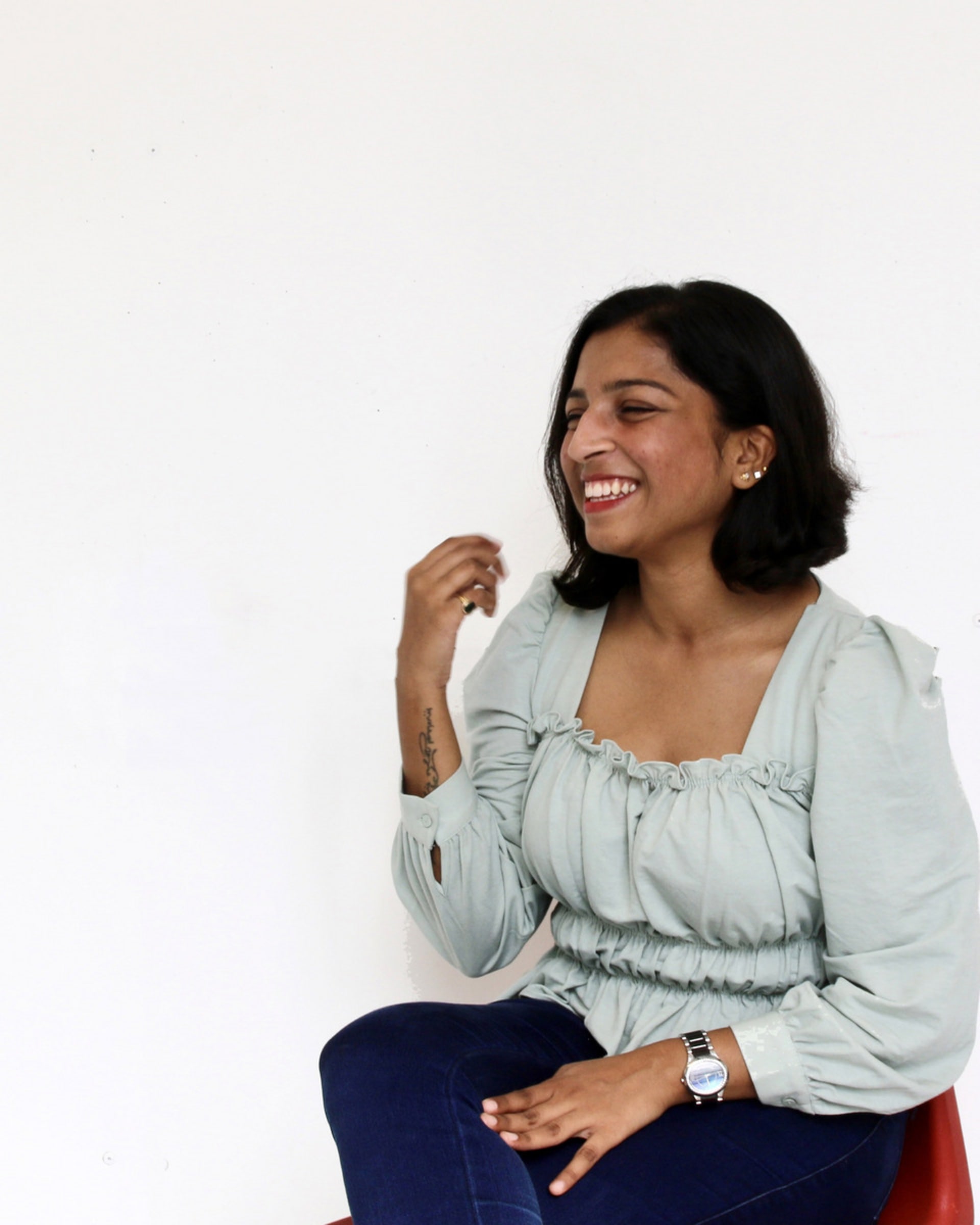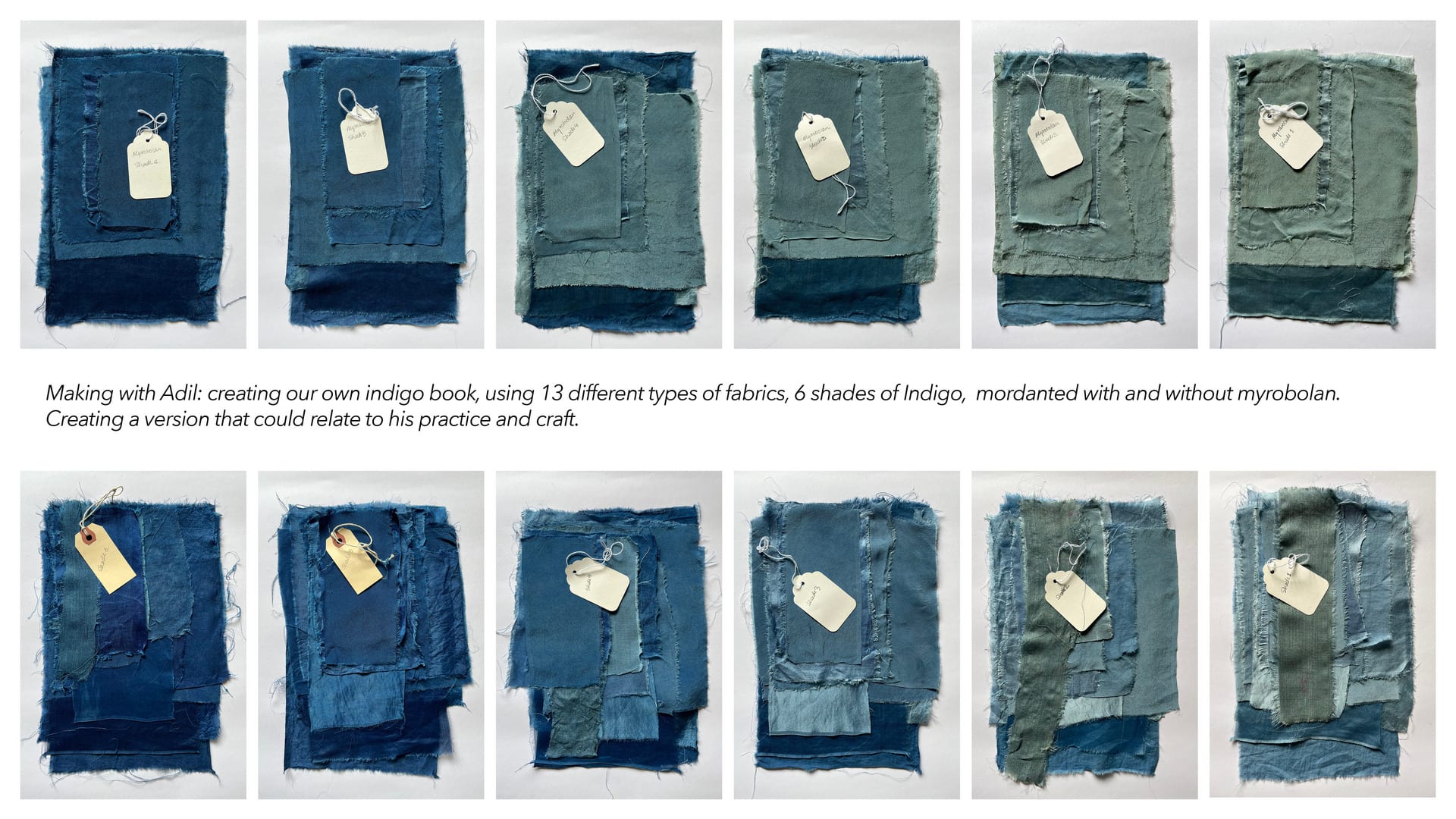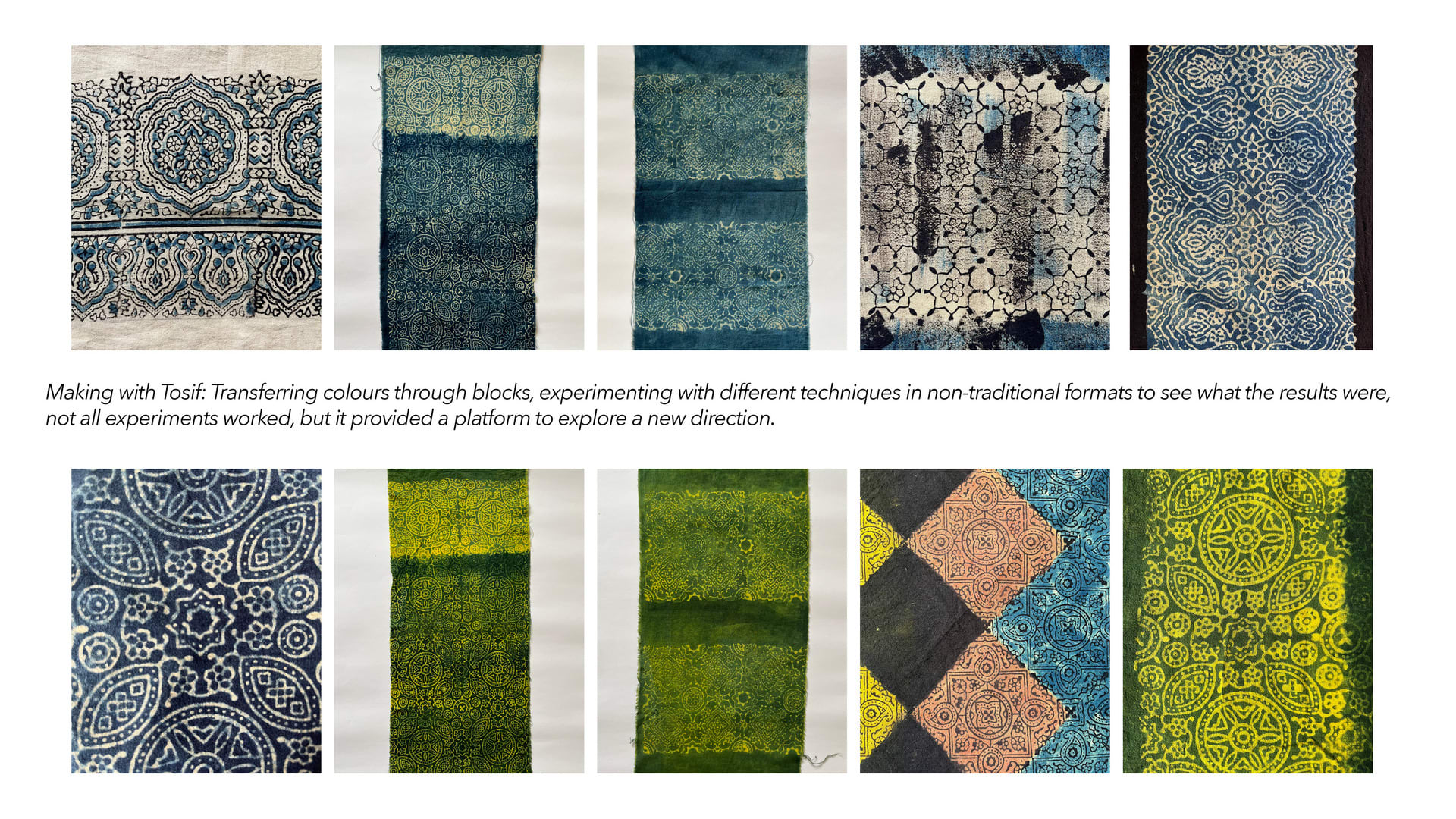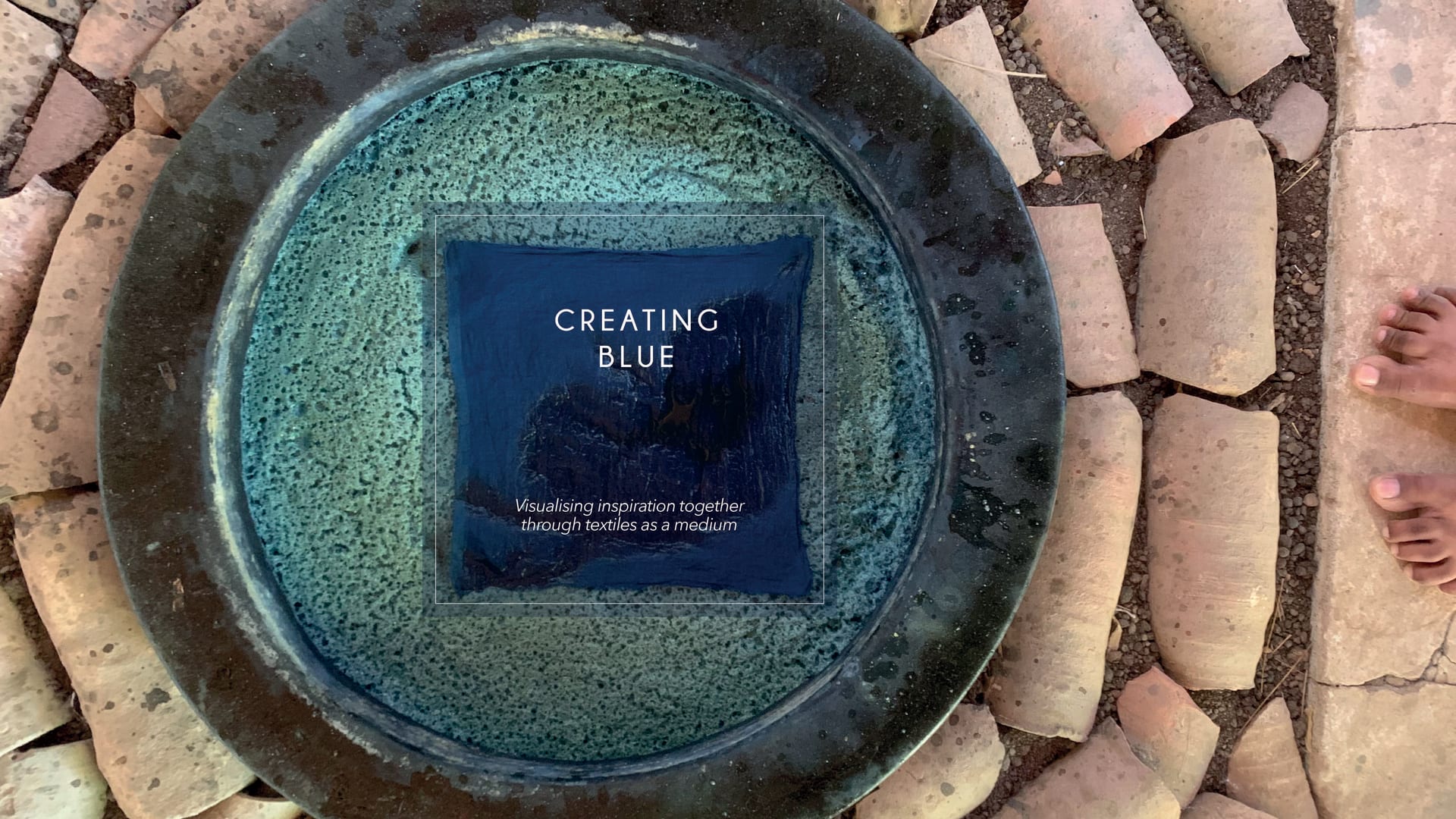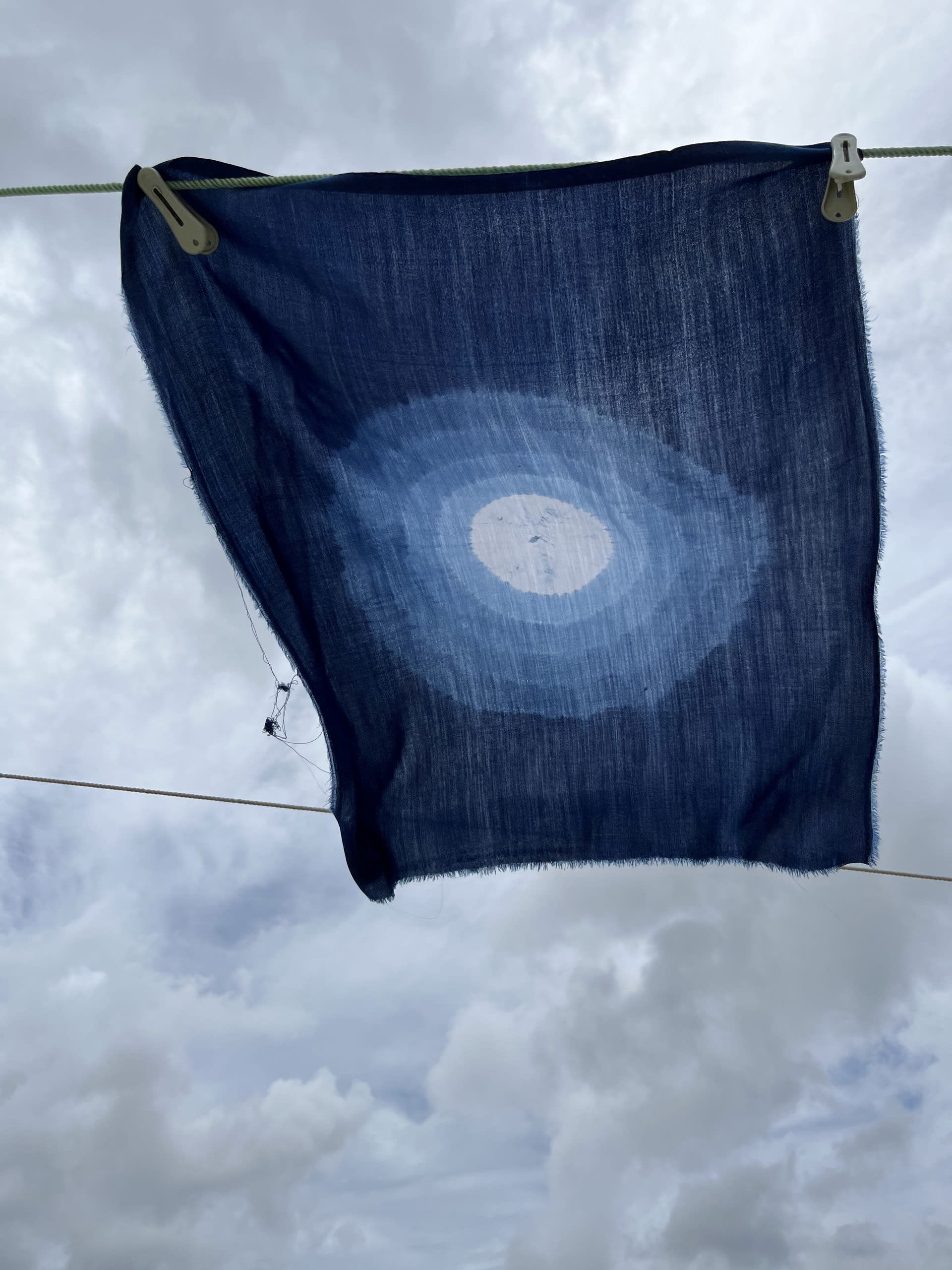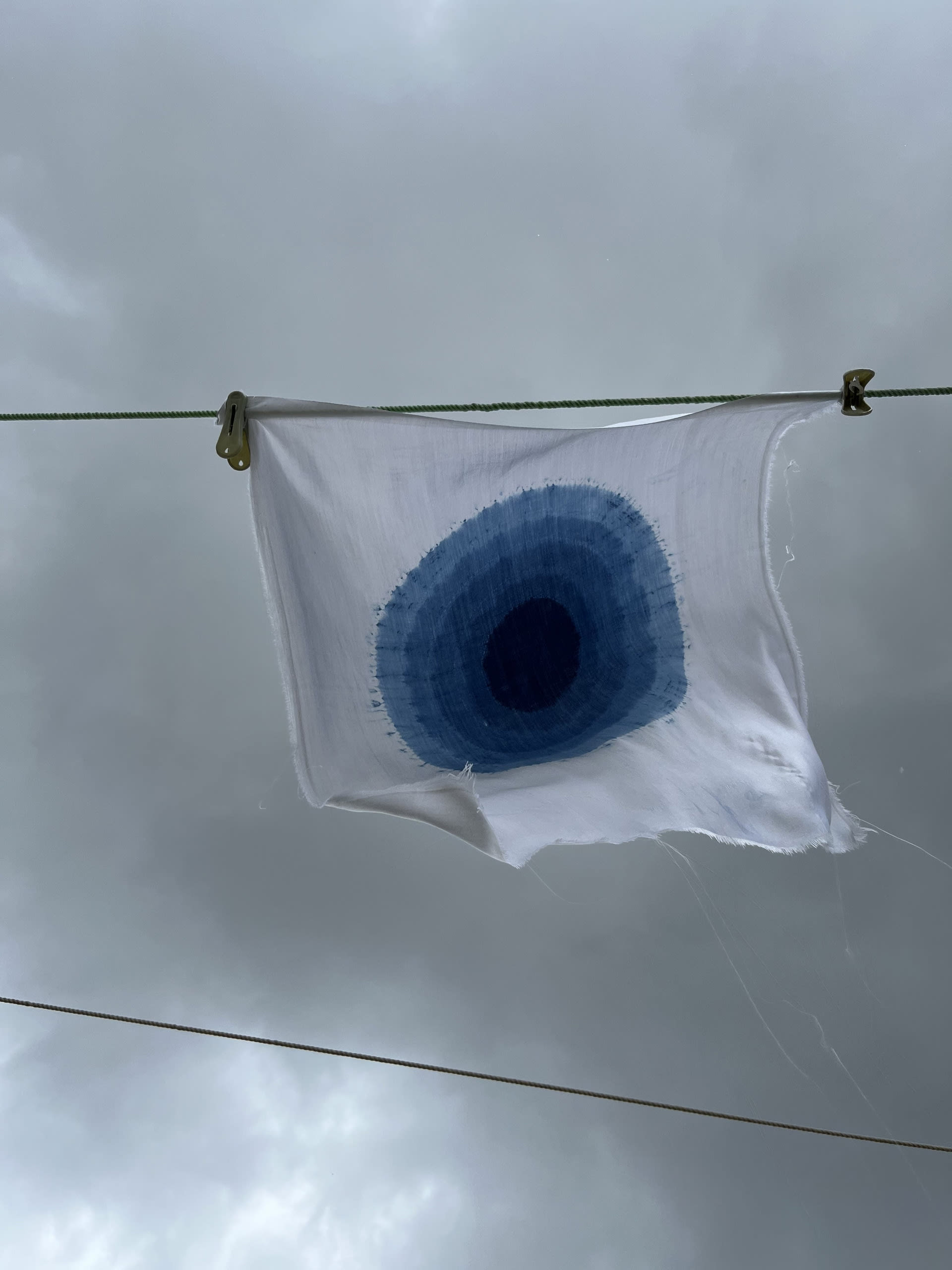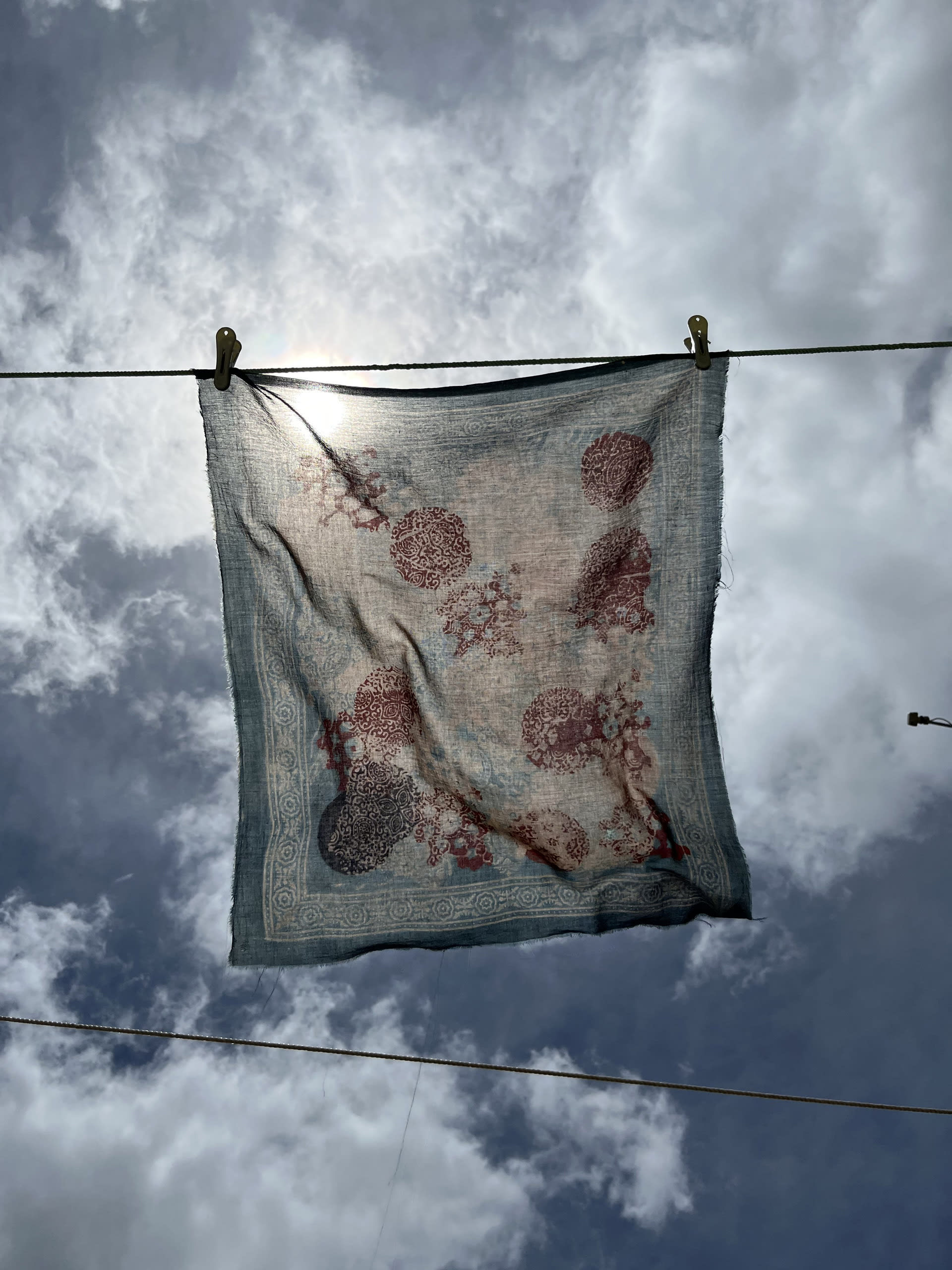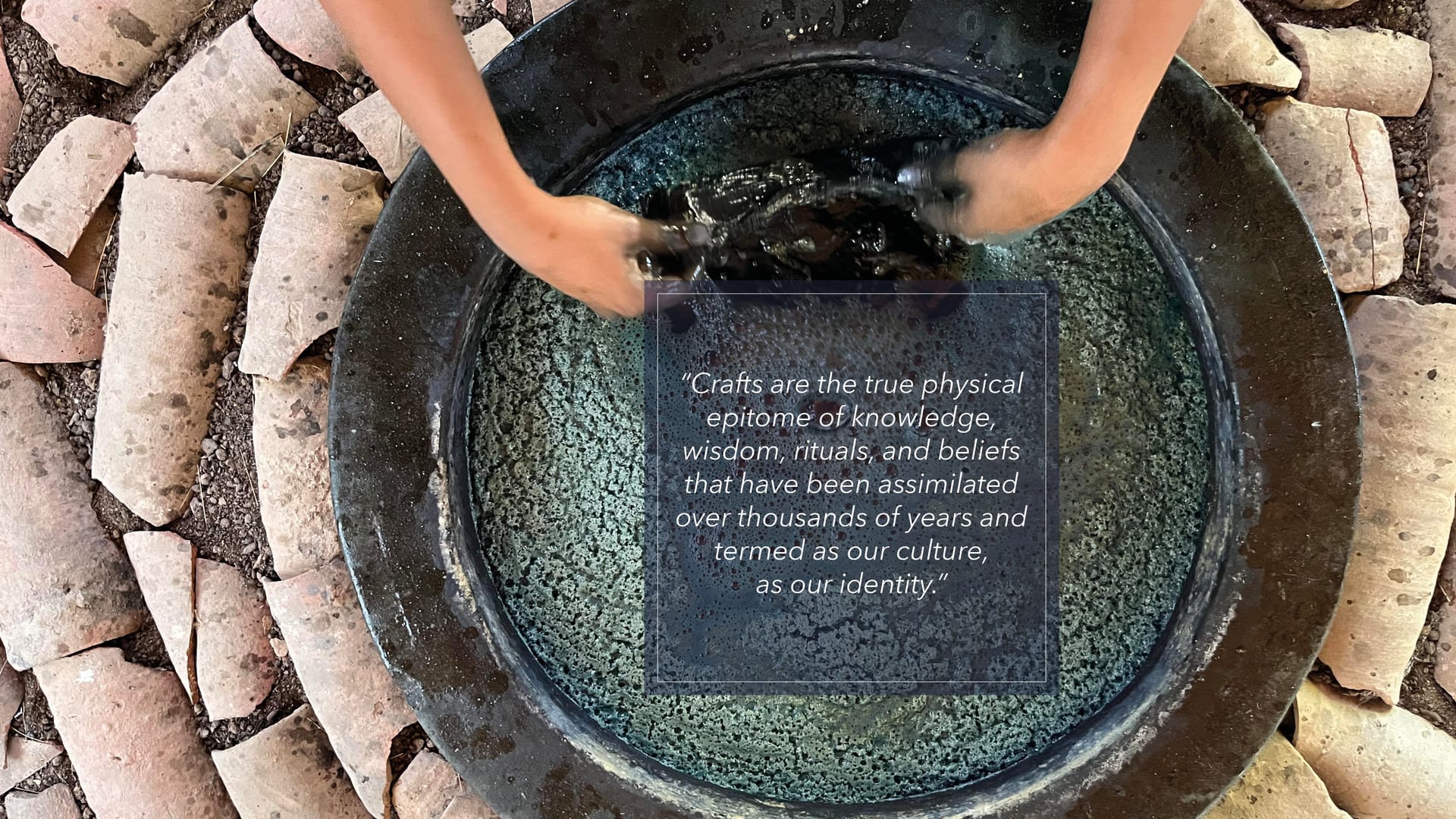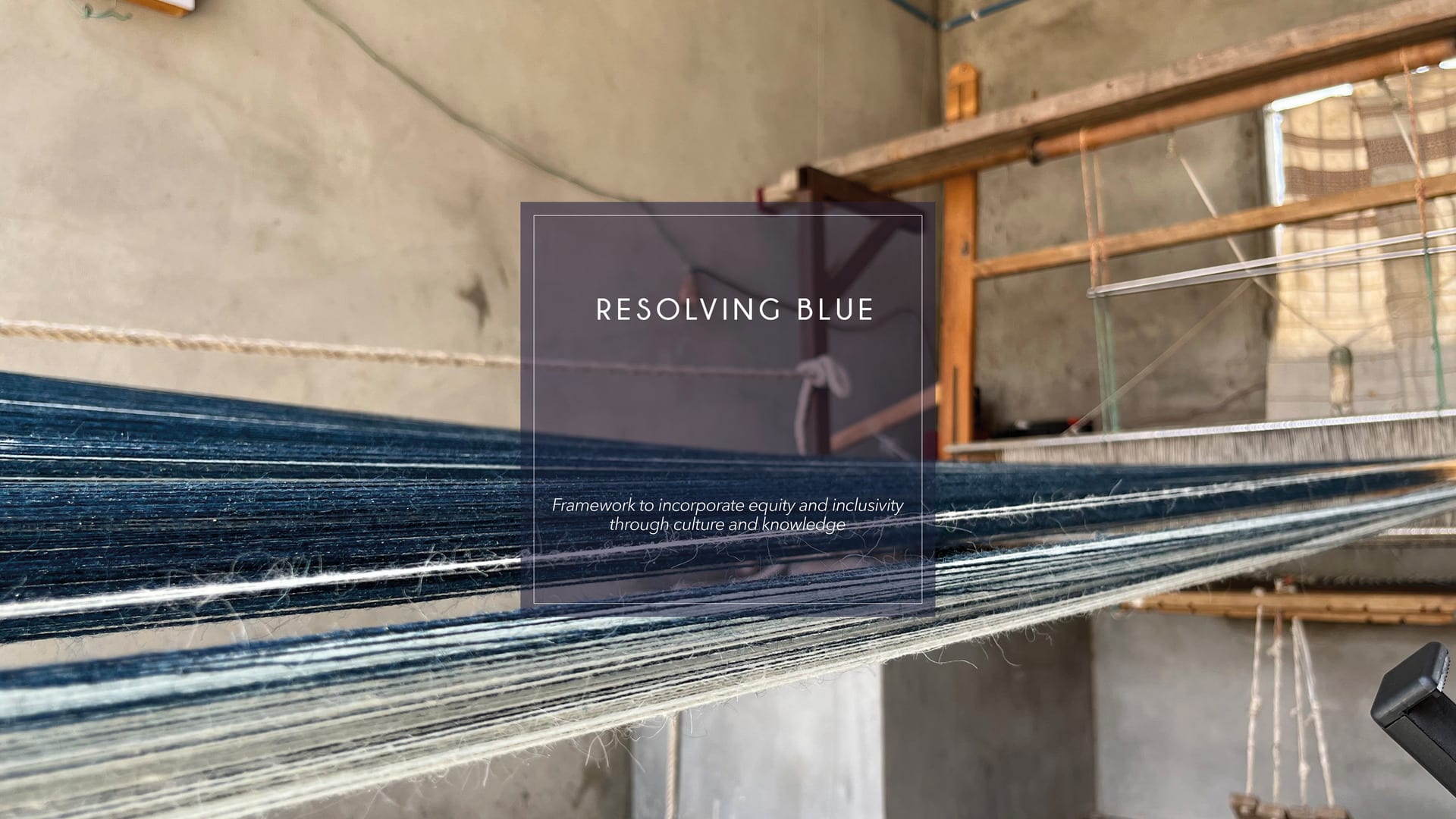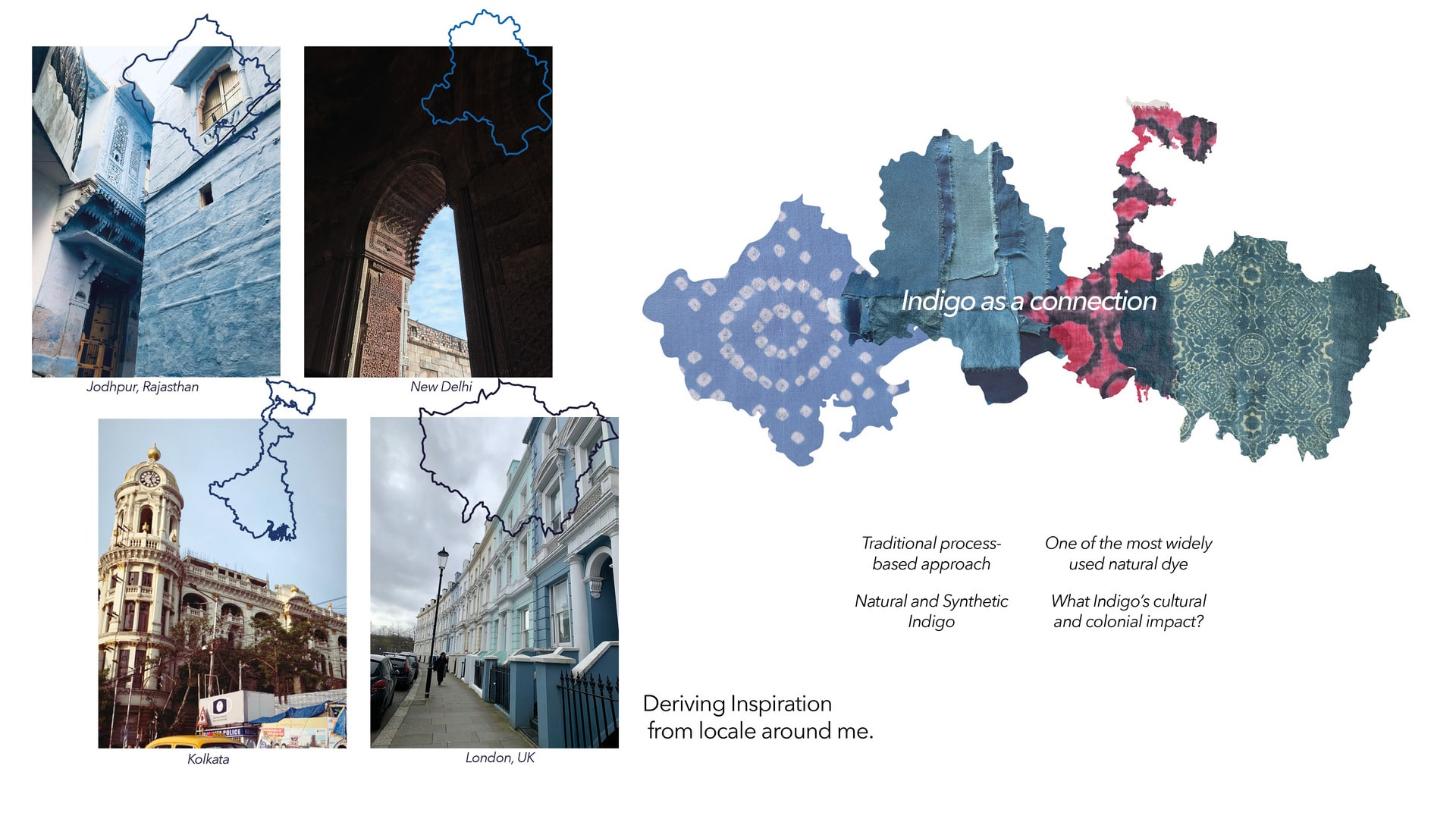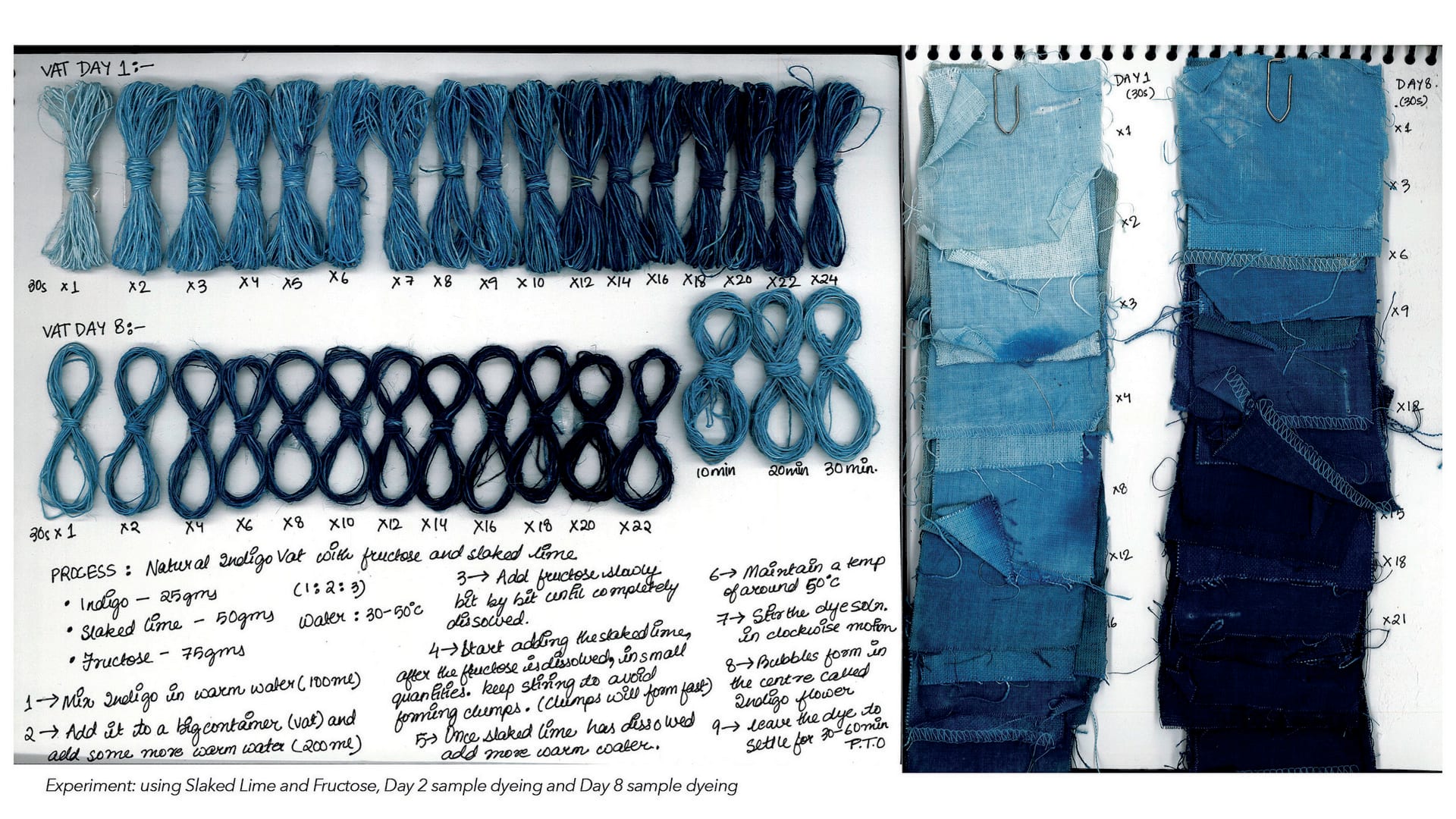नील वर्ण (Neel Varna): The Blue Letter
Sustainability and its different dimensions have been the key element of my explorations at RCA. My investigations into the impact of traditional and cultural practices, on regenerative sustainable development, through Material, Technique, Design and Market led me to the question,
‘What is the Indian way of sustainable thinking?’
‘नील वर्ण (Neel Varna): The Blue Letter’ is a design research project rooted in sustainability, culture, and knowledge.
Craft is centred on indigenous, handmade knowledge and creativity that transcends generations and is linked with identity and kinship.
In the case of Asia, although Design is seen as a modern profession, it becomes both endogenous (an ancient activity of craftspeople) and exogenous (linked to development as it is framed in western terms).
It has the ability to either integrate or marginalise cultural practices.
Herein lie the two aspects of the Indian way of sustainable thinking- the artisan way and the designer way. What can amalgamate the two thought processes together?
I draw inspiration from the various cultures and locales I have experienced. Connecting them led me to Indigo, and thus Blue.
The process involves different design research techniques, through virtual interaction as well as field study and is based on the exchange of knowledge. The various existing dynamics between artisans and designers are explored parallelly.
I designed research processes based on Conversing, Mapping, Making and Creating to redefine Blue.
The methodology follows design research and cultural innovation to develop frameworks and systems, rooted in equity and inclusivity, for collaboration between designers and traditional artisans. It represents a new innovative means of collaborating to collect and analyse ways of thinking and ways of making.
RCA has been a journey of evolution, not only professional but personal as well. I realized through the course of my MA, that the process was about being in the constant evolution of thought, questioning and critiquing the current systems and introspecting my role within them.
I want to take this research forward and put the framework into practice in the industry. This could lead to a foundational shift grounded in empathy and equity to create a collaborative platform for co-designing. I am working towards establishing and developing my practice as a cross-cultural collaborator.

